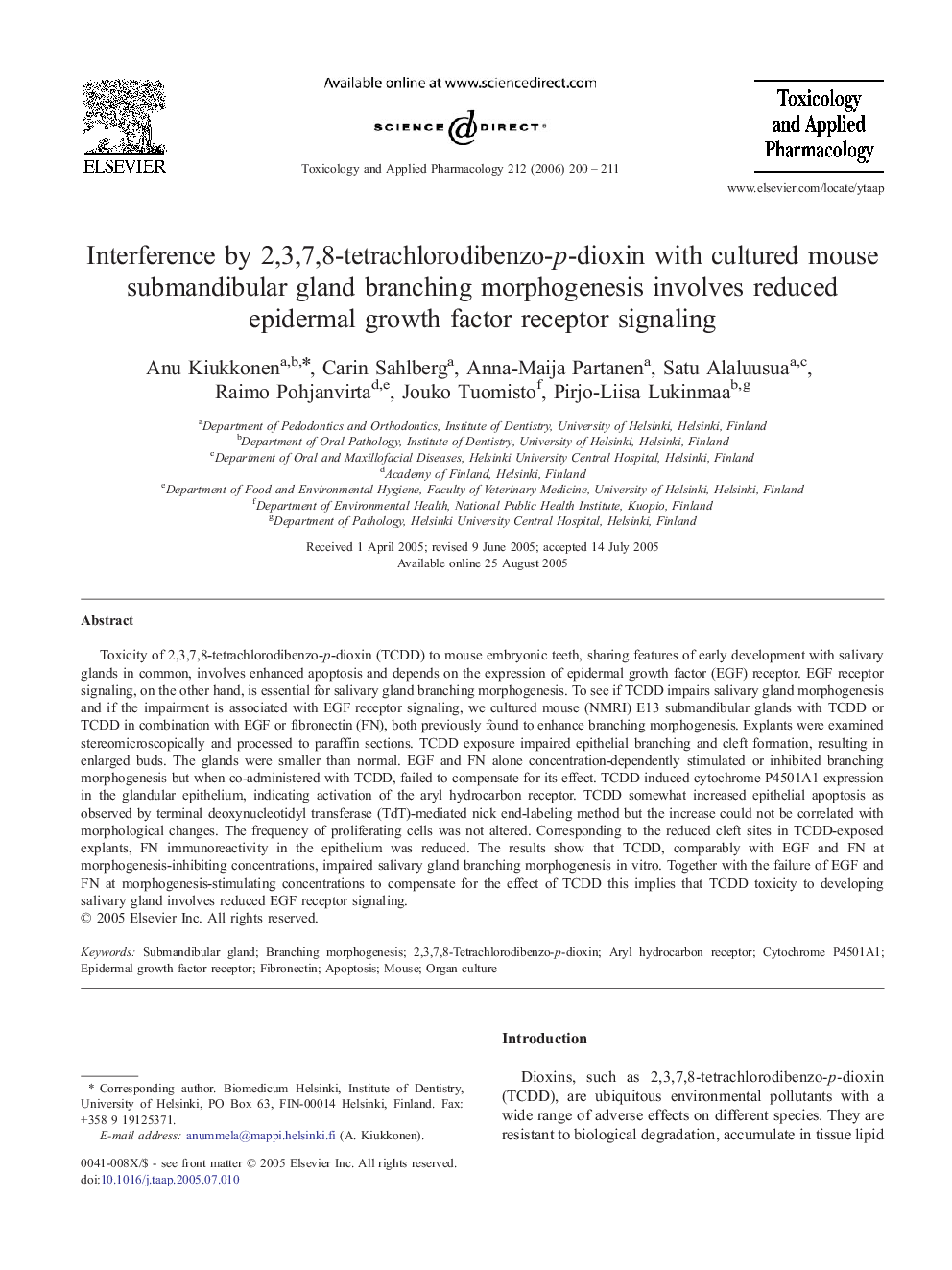| کد مقاله | کد نشریه | سال انتشار | مقاله انگلیسی | نسخه تمام متن |
|---|---|---|---|---|
| 2571628 | 1128643 | 2006 | 12 صفحه PDF | دانلود رایگان |

Toxicity of 2,3,7,8-tetrachlorodibenzo-p-dioxin (TCDD) to mouse embryonic teeth, sharing features of early development with salivary glands in common, involves enhanced apoptosis and depends on the expression of epidermal growth factor (EGF) receptor. EGF receptor signaling, on the other hand, is essential for salivary gland branching morphogenesis. To see if TCDD impairs salivary gland morphogenesis and if the impairment is associated with EGF receptor signaling, we cultured mouse (NMRI) E13 submandibular glands with TCDD or TCDD in combination with EGF or fibronectin (FN), both previously found to enhance branching morphogenesis. Explants were examined stereomicroscopically and processed to paraffin sections. TCDD exposure impaired epithelial branching and cleft formation, resulting in enlarged buds. The glands were smaller than normal. EGF and FN alone concentration-dependently stimulated or inhibited branching morphogenesis but when co-administered with TCDD, failed to compensate for its effect. TCDD induced cytochrome P4501A1 expression in the glandular epithelium, indicating activation of the aryl hydrocarbon receptor. TCDD somewhat increased epithelial apoptosis as observed by terminal deoxynucleotidyl transferase (TdT)-mediated nick end-labeling method but the increase could not be correlated with morphological changes. The frequency of proliferating cells was not altered. Corresponding to the reduced cleft sites in TCDD-exposed explants, FN immunoreactivity in the epithelium was reduced. The results show that TCDD, comparably with EGF and FN at morphogenesis-inhibiting concentrations, impaired salivary gland branching morphogenesis in vitro. Together with the failure of EGF and FN at morphogenesis-stimulating concentrations to compensate for the effect of TCDD this implies that TCDD toxicity to developing salivary gland involves reduced EGF receptor signaling.
Journal: Toxicology and Applied Pharmacology - Volume 212, Issue 3, 1 May 2006, Pages 200–211